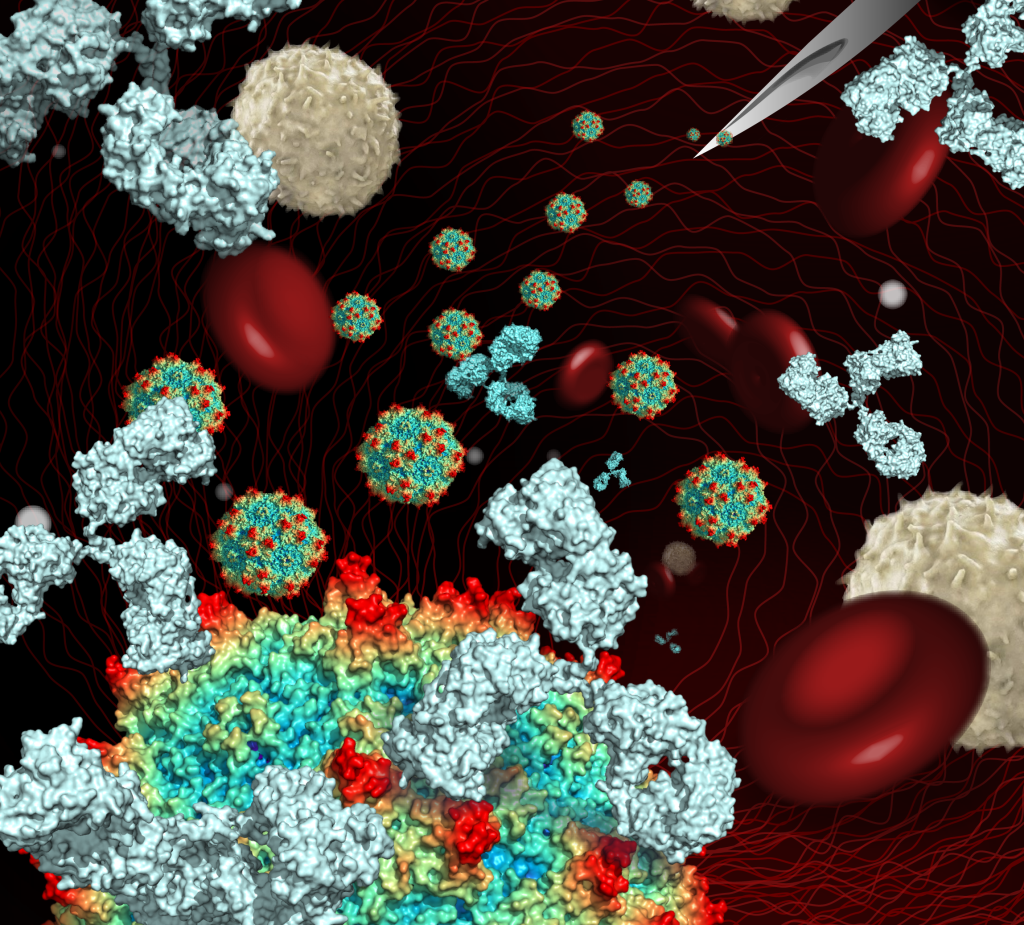Outsmarting antibodies to enable successful delivery of gene therapy
By masking a virus that delivers genes to cells, more people, including children with rare genetic diseases, may be able to receive life-changing and life-saving treatments.
Cutting edge gene therapies are transforming treatment options for some patients. Genetic diseases can be caused by mutations in genes, which are short sections of DNA that encode our proteins and impact the structure and function of our cells, organs and tissues.

Enter gene therapy, which aims to replace or inactivate the faulty gene so that it stops giving the body the wrong instructions. This growing field of medicine is showing great promise, but still has roadblocks to overcome. To address one significant obstacle to delivery of gene therapy, the Office for Health and Medical Research is supporting the work of Associate Professor Grant Logan, through an Early Mid-Career Grant. Logan is a Research Scientist at the Children’s Medical Research Institute. He is researching a gene therapy approach that uses viruses as delivery systems to courier healthy genes to a person’s cells – these virus delivery systems are called “viral vectors”.
Viral vectors are a key component of many gene therapies and are increasingly being used in therapeutic and preventative health interventions, including vaccines. To ensure sufficient and future supply of viral vectors, the NSW Government is investing $134.5 million to establishing the Viral Vector Manufacturing Facility at Westmead. Stage one of the facility is operational for use in gene therapy research, with the first clinical trial anticipated to commence in 2025 using vectors from the facility. When completed, the Stage 2 facility, will provide NSW with a commercial-scale viral vector manufacturing facility capable of meeting the growing demand for viral vectors.
Correcting genetic abnormalities
Adeno-associated viruses, have been found to act as very effective viral vectors, but sometimes the body’s immune system may block them. Logan has extensive experience in the development and application of viral vectors as couriers for gene therapy. His research funded through the Early Mid-Career Grant will explore how to mask the adeno-associated virus so that it can protect the gene therapy from being destroyed by the body’s immune system, allowing greater access for patients.

An effective viral delivery system
Adeno-associated viruses also have a very short, simple genetic code so they can be easily re-engineered in the lab. “We strip them of their genetic information and replace it with the healthy gene,” Logan explains. “We then use the virus as the delivery system to take the healthy gene to the patient’s cells to help treat their disease. These particular viruses have appealed to scientists for gene delivery as they can get inside our cells but are not associated with acute illness in humans.”
How our antibodies can limit gene therapy
“Gene therapy delivered by adeno-associated viruses is radically changing the lives of many patients who would otherwise have few or no treatment options for their disease,” says Logan. “But if a person has already been exposed to that particular virus family, then on the next exposure, their natural antibodies will try to block the virus. This can prevent the gene therapy from delivering its genetic cargo into the target cells.”
Research shows that antibodies to adeno-associated viruses usually develop within the first 2-3 years of life and progressively increase over the first 10 years of life. “So, a child with a genetic disease who tests positive for these antibodies is prevented from accessing gene therapy using this family of viruses as the viral vector delivery system,” says Logan. “This can be devastating news for patients and their families, as many genetic diseases, such as cystic fibrosis, spinal muscular atrophy, Duchenne’s muscular dystrophy and haemophilia, have limited treatment options.” The same antibodies can also potentially prevent adults from accessing novel gene therapies for conditions such as Parkinson’s disease and Alzheimer’s disease, and children who have received gene therapy from receiving future doses should the effects wear off in the longer term or the technology improve.”
Masking antibodies to allow gene therapy
“There are examples in nature where viruses evade neutralisation from the immune system by cloaking themselves in naturally occurring proteins,” says Logan. “With our research we are aiming to do the same thing – to mask the virus from the antibodies, which are a form of protein produced by the immune system.”
To hide the viral vector, Logan will use proteins called DARPins (designed ankyrin repeat proteins). These are derived from small, naturally occurring ankyrin proteins frequently found in nature including in plants and animals. In recent years DARPins have been used in novel treatments for cancer, COVID-19 and cardiovascular inflammation. DARPins are produced to have small variations that can affect how they bind and cloak a particular virus and are organised into ‘libraries’.
Logan aims to ‘naturally select’ DARPins from the library that have the right variation that allows them to most effectively bind to adeno-associated viruses and hide them from human antibody neutralisation – a bit like searching for a snugly fit mask that can also convincingly disguise their identity. “If this work is as successful as we hope, it will be a game changer,” says Logan. “It will enable greater patient access to potentially life-saving gene therapy for all kinds of genetic diseases”.
Updated 7 days ago